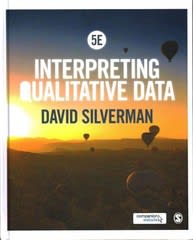Answered step by step
Verified Expert Solution
Question
1 Approved Answer
The Diagnostic and Statistical Manual of Mental Disorders (DSM) is the reference source mental health professionals and physicians use to diagnose mental disorders. The most
The Diagnostic and Statistical Manual of Mental Disorders (DSM) is the reference source mental health professionals and physicians use to diagnose mental disorders. The most recent edition, the DSM-5, was released in 2013. Since its inception, the DSM has been growing in size. History of Mental Illness, the number of diagnosable disorders has tripled since the first publication in 1952 (Farreras, 2020). The DSM-5 added approximately 10 percent new diagnostic categories from the DSM-IV. Contemplate these points: the diagnosis of hording was added to the DSM-5, elevating it from a subtype of obsessive-compulsive disorder. caffeine use disorder and Internet gaming disorder were added to the DSM-5, placed in a special section reserved for disorders in need of further study mental health diagnostic awareness is growing: across social media, prescription drug advertising, and TV programming (Dexter - Antisocial Personality Disorder with comorbidity in Obsessive Compulsive Disorder; Homeland - Bipolar) 1. Main Entry: Provide your response to the following questions. Support your response through the synthesis of concepts from the week's readings and learning resources. a. What does the ever-expanding list of diagnostic categories within the DSM mean to you, to me, your neighbor, to the fellow in the next town? Is the expansion of what is considered diagnostically "mentally disordered" within the DSM something we should be tracking? Why or why not? b. Are practitioners' practical approaches/perspectives on psychological disorders influencing their acceptance or rejection of diagnostic labels within the DSM-5? c. What is the relevance / need for diagnostic labels? Is it nave to reject the use of diagnostic labels? References: https://leocontent.umgc.edu/content/umuc/tus/psyc/psyc353/2225/additional-resources/diagnosing-and-classifying-psychological-disorders.html https://eds-p-ebscohost-com.ezproxy.umgc.edu/eds/ebookviewer/ebook?sid=a12d98c6-e4e0-4675-8fd7-50a5509632c3%40redis&ppid=pp_1&vid=0&format=EB Farreras, I. G. (2020). History of mental illness. In R. Biswas-Diener & E. Diener (Eds), Noba textbook series: Psychology. Campaign, IL: DEF publishers. Retrieved from http://noba.to/65w3s7ex
Step by Step Solution
There are 3 Steps involved in it
Step: 1

Get Instant Access to Expert-Tailored Solutions
See step-by-step solutions with expert insights and AI powered tools for academic success
Step: 2

Step: 3

Ace Your Homework with AI
Get the answers you need in no time with our AI-driven, step-by-step assistance
Get Started


